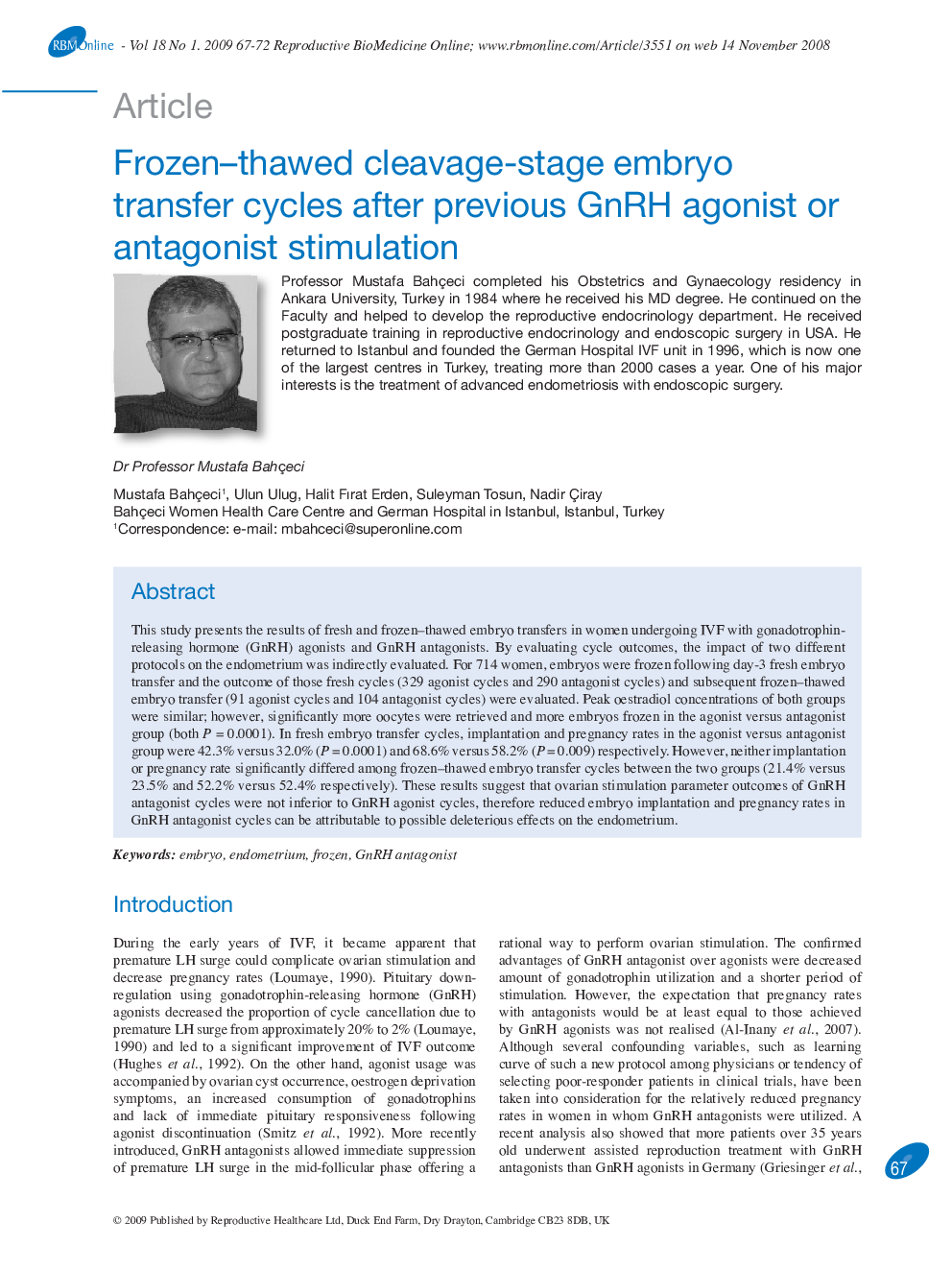| Article ID | Journal | Published Year | Pages | File Type |
|---|---|---|---|---|
| 3972280 | Reproductive BioMedicine Online | 2009 | 6 Pages |
This study presents the results of fresh and frozen–thawed embryo transfers in women undergoing IVF with gonadotrophin-releasing hormone (GnRH) agonists and GnRH antagonists. By evaluating cycle outcomes, the impact of two different protocols on the endometrium was indirectly evaluated. For 714 women, embryos were frozen following day-3 fresh embryo transfer and the outcome of those fresh cycles (329 agonist cycles and 290 antagonist cycles) and subsequent frozen–thawed embryo transfer (91 agonist cycles and 104 antagonist cycles) were evaluated. Peak oestradiol concentrations of both groups were similar; however, significantly more oocytes were retrieved and more embryos frozen in the agonist versus antagonist group (both P = 0.0001). In fresh embryo transfer cycles, implantation and pregnancy rates in the agonist versus antagonist group were 42.3% versus 32.0% (P = 0.0001) and 68.6% versus 58.2% (P = 0.009) respectively. However, neither implantation or pregnancy rate significantly differed among frozen–thawed embryo transfer cycles between the two groups (21.4% versus 23.5% and 52.2% versus 52.4% respectively). These results suggest that ovarian stimulation parameter outcomes of GnRH antagonist cycles were not inferior to GnRH agonist cycles, therefore reduced embryo implantation and pregnancy rates in GnRH antagonist cycles can be attributable to possible deleterious effects on the endometrium.
